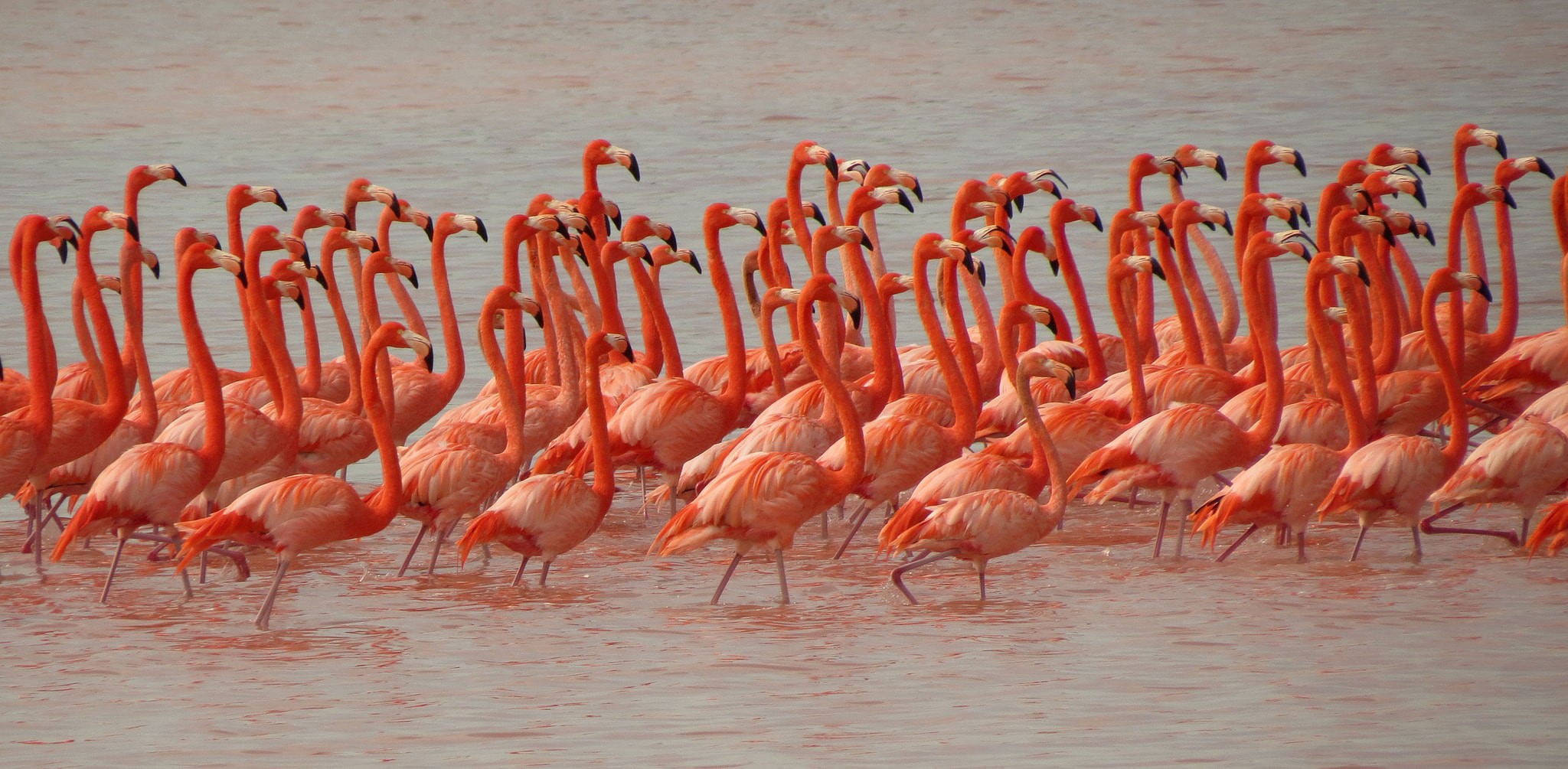So, have you ever wondered what kind of incredible wildlife Mexico has to offer? Well, let me tell you, my friend, you are in for a real treat! Mexico is not just famous for its stunning beaches and delicious food, but it is also home to a wide variety of unique and breathtaking wildlife. From its vast deserts to its lush rainforests, this country has it all when it comes to animal diversity.
When you think of Mexico, tourism and travel are usually the first things that come to mind. But if you’re a nature lover like me, you’ll be thrilled to know that Mexico is a paradise for ecotourism. From the famous Monarch butterfly migration in Michoacán to the majestic humpback whales that can be spotted off the coast of Baja California, there are countless opportunities to witness incredible wildlife in this beautiful country.
But it’s not just about the big and impressive animals. Mexico is also home to a wide range of unique birds, reptiles, and marine life. The country’s diverse ecosystems, such as the Yucatan Peninsula and the Sea of Cortez, provide a habitat for various species that you won’t find anywhere else in the world. Whether you’re a birdwatcher, a snorkeler, or simply someone who appreciates the beauty of nature, Mexico has something special to offer you.
But hey, don’t worry if you’re not quite ready to pack your bags and head to Mexico just yet. In our upcoming article, we’ll dive deeper into the world of Mexican wildlife. We’ll explore the different regions of Mexico known for their incredible biodiversity, and we’ll give you all the tips and tricks you need to make the most out of your ecotourism adventure. So stay tuned and get ready to be amazed by the breathtaking wildlife that awaits you in Mexico!
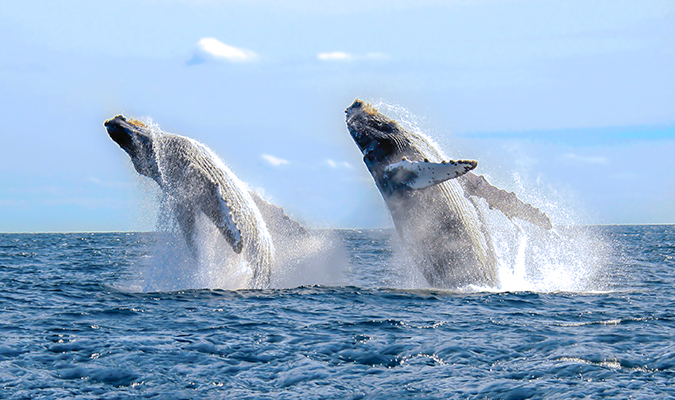
The Diverse Ecosystems of Mexico
Mexico is a country renowned for its stunning natural beauty and rich biodiversity. From the rainforests of Chiapas to the deserts of Baja California, the country boasts a wide range of diverse ecosystems that provide a habitat for numerous plant and animal species. Embark on a journey through Mexico’s varied landscapes, as we explore the breathtaking wildlife that calls this country home.
The Rainforests of Chiapas
Located in southern Mexico, the rainforests of Chiapas are a haven for wildlife enthusiasts. With their lush green canopies and abundant vegetation, these forests are teeming with life. Explore the depths of the Lacandon Jungle, where jaguars, howler monkeys, and tapirs roam freely. Immerse yourself in the melodic symphony created by the calls of tropical birds, such as toucans and parrots. It is truly a paradise for nature lovers.
The Deserts of Baja California
Venture westward to the arid landscapes of Baja California, where the deserts stretch as far as the eye can see. Despite the harsh conditions, this region is home to a surprising array of unique plant and animal life. The towering cardón cacti dominate the desert landscape, providing shelter and sustenance for desert-dwelling creatures like rattlesnakes and roadrunners. Explore the vast cacti forests and discover the beauty that thrives in the arid wilderness.
The Mangroves of Sian Ka’an
In the coastal region of Quintana Roo lies the magnificent Sian Ka’an Biosphere Reserve, a UNESCO World Heritage site. Here, the mangrove forests intertwine with the sparkling turquoise waters, creating an otherworldly landscape. These mangroves act as a nursery for marine life, providing a safe haven for countless fish species and sea turtles. Take a boat tour through the winding waterways and marvel at the intricate network of roots and vibrant green foliage that make up these mangroves.
The Coral Reefs of the Yucatan Peninsula
No exploration of Mexico’s wildlife would be complete without a visit to the breathtaking coral reefs of the Yucatan Peninsula. Dive into the crystal-clear waters of Cozumel or Cancun and discover a vibrant underwater paradise. The reefs are teeming with colorful tropical fish, graceful sea turtles, and mesmerizing coral formations. Snorkel or scuba dive your way through this underwater wonderland, and witness the delicate balance of marine life that thrives in these coral reefs.
Discovering the Exquisite Flora
Mexico is home to a multitude of stunning plant species, each with its own unique characteristics and beauty. From the iconic agave plants to the delicate mariposa lilies, the flora of Mexico is a sight to behold.
The Iconic Agave Plants
Agave plants, also known as “maguey” in Mexico, have become synonymous with the country’s culture and traditions. These succulents are not only aesthetically pleasing with their symmetrical rosettes of spiky leaves, but they also have practical uses. Agave is the main ingredient in the production of tequila and mezcal, two of Mexico’s most famous alcoholic beverages. Visit an agave plantation and learn about the intricate process of harvesting and distilling agave, while admiring the beauty of these remarkable plants.
The Vibrant Orchids
Mexico is home to over 1,300 species of orchids, making it a paradise for orchid enthusiasts. These exquisite flowers come in a variety of shapes, sizes, and colors, ranging from vibrant pinks to delicate whites. The misty cloud forests of Oaxaca and Veracruz are particularly renowned for their orchid diversity. Embark on a guided hike through these mystical forests and witness the breathtaking sight of orchids blooming in their natural habitat.
The Unique Cacti
The cactus is a quintessential symbol of Mexico’s desert landscapes. With over 1,500 species of cacti found in the country, Mexico boasts the highest cactus diversity in the world. From the towering saguaro cacti of the Sonoran Desert to the prickly pear cacti that dot the landscapes of central Mexico, these plants have adapted to survive in the arid conditions. Marvel at the unique shapes and textures of these desert inhabitants and appreciate their ability to thrive in the face of adversity.
The Delicate Mariposa Lilies
One cannot help but be captivated by the delicate beauty of the mariposa lilies that grace Mexico’s meadows and mountains. These elegant flowers bloom in a variety of colors, from vibrant oranges and reds to delicate pinks and purples. They are often found in alpine regions, such as the Sierra Madre Oriental and the Nevado de Toluca. Take a leisurely hike through these high-altitude landscapes and be rewarded with the enchanting sight of mariposa lilies gently swaying in the breeze.
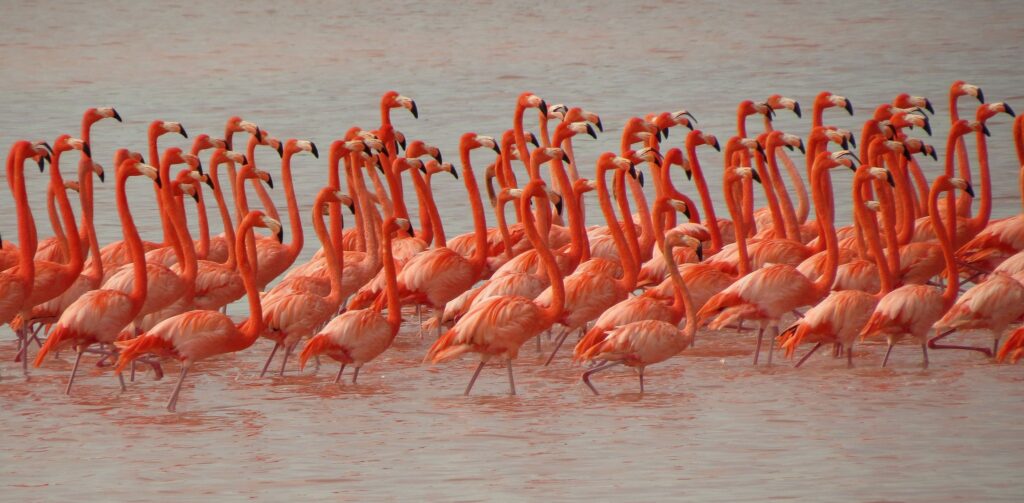
Marveling at the Diverse Avifauna
Mexico is a birdwatcher’s paradise, boasting a staggering 1,150 bird species, the second-highest number in the world. From the resplendent quetzals of Oaxaca to the majestic golden eagles of Chihuahua, Mexico’s avifauna never fails to impress.
The Resplendent Quetzals of Oaxaca
The quetzal is perhaps one of the most iconic bird species of Mexico. With its vibrant green plumage and long, flowing tail feathers, the resplendent quetzal is a sight to behold. Oaxaca is one of the best places in Mexico to spot this elusive bird. Take a guided tour through the cloud forests of Oaxaca and be treated to the breathtaking sight of quetzals perched high in the trees.
The Colorful Macaws of the Yucatan
The Yucatan Peninsula is home to a variety of vibrant bird species, including the dazzling macaws. These large parrots with their vibrant feathers and playful personalities are a joy to observe. Head to the Sian Ka’an Biosphere Reserve or the Calakmul Biosphere Reserve, and you may be lucky enough to witness a flock of macaws flying overhead in all their colorful glory.
The Majestic Golden Eagles of Chihuahua
Venture into the northern state of Chihuahua, and you will have the opportunity to spot one of Mexico’s most magnificent bird species – the golden eagle. With its powerful wingspan and striking plumage, the golden eagle is the epitome of beauty and strength. Visit the Sierra Madre Occidental and keep your eyes peeled for this imposing bird of prey soaring through the skies.
Adventures with Aquatic Life
Mexico’s coastlines are a playground for aquatic life, offering countless opportunities for unforgettable encounters with oceanic creatures. From swimming with whale sharks to encountering dolphins, prepare to be amazed by the wonders that lie beneath the turquoise waters.
Swimming with Whale Sharks in the Sea of Cortez
Immerse yourself in the breathtaking experience of swimming alongside the gentle giants of the sea – whale sharks. The Sea of Cortez is one of the best places in the world to encounter these magnificent creatures. Don your snorkeling gear and join a guided tour to get up close and personal with these awe-inspiring animals. Witnessing a whale shark gracefully glide through the water is an experience that will stay with you forever.
Exploring the Sea Turtles of the Pacific Coast
Mexico is known for its sea turtle populations, with several species nesting on the country’s coastline. The Pacific Coast is particularly renowned for its sea turtle conservation efforts. Visit the beaches of Oaxaca or Michoacan during nesting season and witness the remarkable sight of mother turtles coming ashore to lay their eggs. Take part in a turtle release program and watch as baby turtles make their journey towards the ocean.
Encountering Dolphins in the Gulf of Mexico
Set sail in the Gulf of Mexico, and you may have the opportunity to encounter playful pods of dolphins. These intelligent creatures are known for their acrobatic displays and friendly nature. Join a dolphin-watching tour and witness their mesmerizing jumps and flips. It is an experience that will leave you with a sense of wonder and a newfound appreciation for these delightful marine mammals.

Encountering Land Mammals
Mexico is home to a wide variety of land mammals, some of which are rare and endangered. From observing jaguars in the Calakmul Biosphere Reserve to witnessing the migration of monarch butterflies in Michoacan, the country offers numerous opportunities to witness these remarkable creatures up close.
Observing Jaguars in the Calakmul Biosphere Reserve
The Calakmul Biosphere Reserve in the state of Campeche is one of the last strongholds of the elusive jaguar. Embark on a guided night tour through the reserve and, with a bit of luck, you may catch a glimpse of this majestic big cat. The reserve also supports a diverse array of other wildlife, including spider monkeys, tapirs, and ocelots, making it a must-visit destination for wildlife enthusiasts.
Spotting Gray Whales in Baja California Sur
Every winter, the waters of Baja California Sur become a haven for gray whales that migrate from the cold Arctic seas to give birth and raise their young. Take a boat tour from Loreto, Guerrero Negro, or Cabo San Lucas, and witness the awe-inspiring sight of these massive marine mammals breaching and playing in the ocean. It is an experience that will leave you with a profound appreciation for the wonders of nature.
Witnessing the Migration of Monarch Butterflies in Michoacan
The migration of the monarch butterflies is one of nature’s most spectacular events. Every year, millions of monarch butterflies travel thousands of miles from Canada and the United States to winter in the forests of Michoacan. Witness the mesmerizing sight of these vibrant orange butterflies covering the trees of the Monarch Butterfly Biosphere Reserve. It is a truly unforgettable experience that showcases the beauty and resilience of these delicate creatures.
Exploring Marine Life
Mexico’s coastal waters are home to a vast array of marine life, making it a dream destination for underwater enthusiasts. From snorkeling with colorful tropical fish in Cozumel to diving among vibrant coral formations in Cancun, prepare to be immersed in a world of breathtaking beauty.
Snorkeling with Colorful Tropical Fish in Cozumel
Cozumel Island, located off the coast of the Yucatan Peninsula, is renowned for its crystal-clear waters and vibrant coral reefs. Strap on your snorkeling gear and venture beneath the surface to discover a kaleidoscope of colors. Swim among schools of tropical fish, such as angelfish, parrotfish, and trumpetfish, as they dart in and out of the coral formations. Cozumel’s underwater world is a paradise for snorkelers of all skill levels.
Diving Among Vibrant Coral Formations in Cancun
Cancun’s underwater world is a treasure trove of biodiversity, with its vibrant coral formations and an abundance of marine life. Whether you’re a seasoned diver or a beginner, exploring the underwater landscapes of Cancun is an experience like no other. Descend into the depths and witness the breathtaking colors and intricate patterns of the corals. Encounter marine creatures such as eagle rays, sea turtles, and even the occasional nurse shark. Cancun’s dive sites offer endless opportunities for adventure and discovery.
Observing Sea Lions in the Sea of Cortez
The Sea of Cortez, also known as the Gulf of California, is a hotspot for marine life. One of its most charismatic inhabitants is the playful sea lion. Venture to Isla Espiritu Santo, part of a UNESCO Biosphere Reserve, and witness these curious and agile creatures in their natural habitat. Join a guided snorkeling tour and enjoy interaction with these sociable marine mammals. Their playful antics and graceful underwater movements will leave you with a profound appreciation for the wonders of the sea.
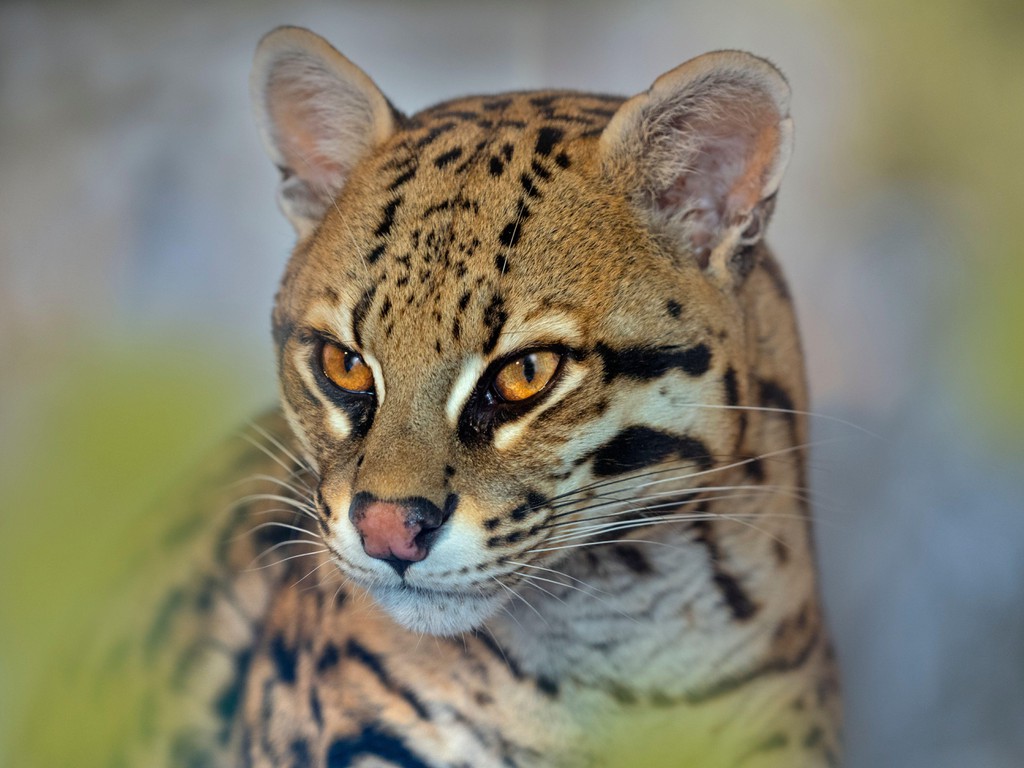
Protecting Endangered Species
Mexico is committed to the conservation of its endangered species and has implemented various initiatives for their protection. From the conservation efforts for the Mexican wolf to the preservation of the vaquita porpoise in the Gulf of California, Mexico is working tirelessly to ensure the survival of these iconic creatures.
Conservation Efforts for the Mexican Wolf
The Mexican wolf, also known as the lobo, is one of the most endangered wolf subspecies in the world. Mexico’s northern states, such as Chihuahua and Sonora, are home to the remaining wild population of Mexican wolves. Conservation organizations, in collaboration with the government, have implemented programs to protect and reintroduce these wolves into their natural habitats. Find out more about these conservation efforts and how you can support the recovery of this magnificent species.
Preserving the Vaquita Porpoise in the Gulf of California
The vaquita porpoise, a small and elusive cetacean, is on the brink of extinction. With an estimated population of fewer than 10 individuals, urgent measures are being taken to save this species. The Gulf of California is the vaquita’s only known habitat, and its decline is mainly attributed to bycatch in illegal fishing nets. Learn about the efforts being made to protect the vaquita, including the establishment of protected areas and the promotion of sustainable fishing practices.
Protecting the Black Bear Population in Sierra Madre Occidental
The black bear, or “oso negro” in Spanish, is a symbol of Mexico’s wilderness and is considered a keystone species in the Sierra Madre Occidental. However, habitat loss and illegal hunting pose significant threats to their survival. Through the establishment of protected areas and the implementation of anti-poaching measures, Mexico aims to secure a future for its black bear population. Discover the importance of preserving these magnificent creatures and how you can contribute to their conservation.
The Delicate Balance of Marine Ecosystems
Mexico’s marine ecosystems, such as coral reefs and mangrove forests, play a vital role in maintaining the health of our planet. Unfortunately, these ecosystems are also under threat from human activities. Recognizing the importance of coral reef preservation and the impact of pollution on marine biodiversity is crucial in ensuring their long-term survival.
The Importance of Coral Reef Preservation
Coral reefs are often referred to as the “rainforests of the sea” due to their incredible biodiversity and importance in supporting marine life. Mexico is home to some of the world’s most beautiful and diverse coral reefs. However, factors such as climate change, pollution, and overfishing pose a significant threat to these delicate ecosystems. Increasing awareness about the importance of coral reef preservation is essential in protecting these vital habitats for future generations.
The Impact of Pollution on Marine Biodiversity
Human activities, including coastal development, pollution, and improper waste disposal, have a detrimental impact on marine biodiversity. Plastic pollution, in particular, poses a significant threat to marine life. Mexico is taking steps to address this issue through initiatives such as beach clean-ups and the implementation of stricter waste management regulations. However, individual actions can also make a difference. By reducing our use of single-use plastics and adopting sustainable practices, we can help protect Mexico’s coastal ecosystems and the species that rely on them.
Protecting Nesting Grounds for Sea Turtles
Mexico’s coastlines are crucial nesting grounds for several sea turtle species, including the critically endangered Kemp’s ridley turtle. As these turtles return to the same beaches year after year to lay their eggs, protecting their nesting grounds is essential for their survival. Mexico has implemented numerous conservation programs, including the establishment of protected areas and community-based initiatives. By supporting these efforts and respecting nesting guidelines, we can ensure the continued success of sea turtle populations in Mexico.
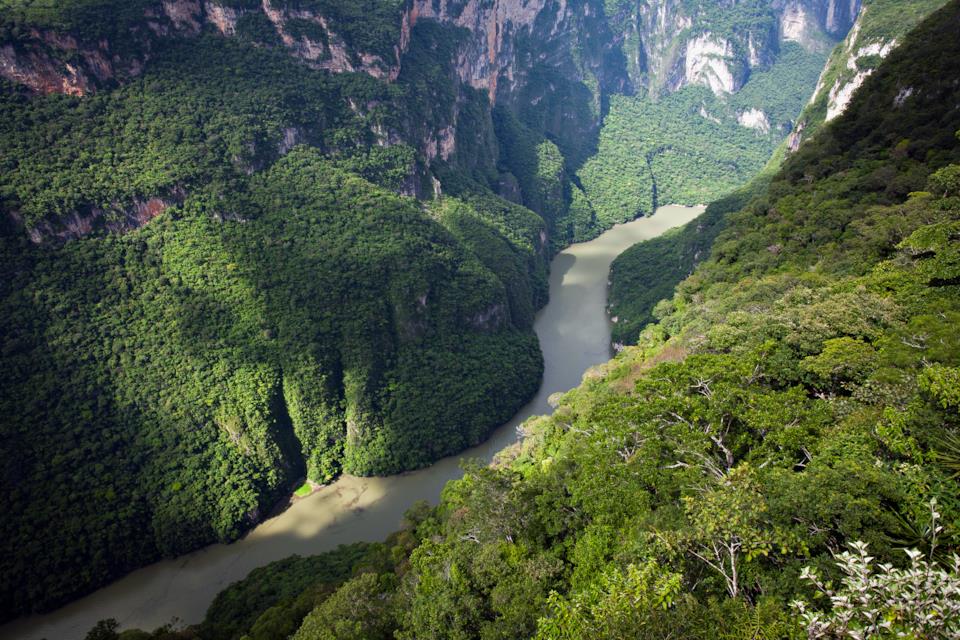
The Fascinating Insect World
While often overlooked, Mexico is home to an astonishing diversity of insect species. From the renowned monarch butterfly migration to the vibrant world of beetles and ants, exploring Mexico’s insect world unveils a world of wonders.
Learning About Monarch Butterfly Migration
Every year, millions of monarch butterflies embark on an extraordinary journey from Canada and the United States to Mexico. They travel thousands of miles to reach the oyamel fir forests of Michoacan and the Estado de Mexico. Witnessing this natural phenomenon is a truly humbling experience. Visit the Monarch Butterfly Biosphere Reserve during the winter months and be surrounded by a sea of orange and black as the butterflies gather in huge clusters. Learn about the conservation efforts in place to protect these fragile creatures and their incredible migration.
Exploring the Vibrant World of Beetles
Mexico is home to an astounding diversity of beetle species, ranging from the small and inconspicuous to the large and colorful. These fascinating creatures play important roles in ecosystems, from decomposing organic matter to pollinating plants. Take a guided tour through the jungles of Chiapas or the cloud forests of Veracruz and discover the myriad of beetles found in these rich habitats. Observe their intricate colors and unique adaptations that allow them to thrive in their respective environments.
Marveling at the Diverse Species of Ants
Ants, with their complex social structures and remarkable adaptations, have long fascinated entomologists and nature enthusiasts alike. Mexico is a hotbed of ant diversity, with a vast array of species inhabiting its varied ecosystems. From leaf-cutter ants to army ants, each species has its own fascinating behavior and ecological role. Join an expert-led ant-watching tour in the rainforests of Chiapas or Oaxaca and delve into the intricate world of these industrious insects.
Ecotourism and Sustainable Practices
Mexico has embraced ecotourism as a way to promote the preservation of its natural resources while providing economic benefits to local communities. By engaging in responsible tourism practices, supporting local initiatives, and promoting wildlife conservation through travel, visitors play a vital role in Mexico’s sustainable development.
The Benefits of Responsible Tourism
Responsible tourism not only benefits the environment but also contributes to the well-being of local communities. When choosing accommodations, opt for eco-friendly hotels or eco-lodges that prioritize sustainability and minimize their environmental impact. Respect wildlife and their habitats by following guidelines and regulations set by protected areas. Engage in activities that promote cultural exchange and support local artisans and businesses. By practicing responsible tourism, you can leave a positive impact on the communities you visit while fostering a deeper connection with Mexico’s natural and cultural heritage.
Supporting Local Communities through Eco-Friendly Initiatives
Mexico’s rich biodiversity often coexists with indigenous communities who have a deep understanding of their natural surroundings. By supporting eco-friendly initiatives organized by these communities, tourists can contribute to the preservation of traditional knowledge and ensure the sustainable use of natural resources. Engage in community-led tours, purchase locally made crafts, and dine in establishments that showcase traditional cuisine. By doing so, you can support the economic empowerment of local communities and encourage the continuation of their sustainable practices.
Promoting Wildlife Conservation through Travel
Travel has the power to inspire and educate. By experiencing firsthand the wonders of Mexico’s wildlife and understanding the threats they face, travelers can become advocates for conservation. Learn about local conservation projects and donate your time and resources to organizations working toward wildlife preservation. Spread the message of environmental stewardship and share your experiences with others to raise awareness about the importance of protecting Mexico’s incredible biodiversity.
Unveiling Hidden Gems
While Mexico is known for its iconic wildlife, there are also hidden gems waiting to be discovered. From lesser-known species to the breathtaking cenotes of the Yucatan Peninsula and the biodiversity of the Sierra Gorda, these hidden treasures showcase the country’s incredible diversity.
The Lesser-Known Species of Mexico
While jaguars, butterflies, and sea turtles often steal the spotlight, Mexico is home to a multitude of lesser-known species that are equally deserving of attention. Discover the elusive Mexican mole lizard, a bizarre reptile that burrows through the sand, or the axolotl, a unique amphibian that retains its juvenile features throughout its life. Unveiling these hidden gems of Mexico’s wildlife offers a deeper understanding of the intricacies of its ecosystems.
Exploring the Cenotes of the Yucatan Peninsula
The Yucatan Peninsula is famous for its stunning turquoise beaches, but beneath the surface lies a hidden world of incredible beauty – the cenotes. These natural sinkholes were once sacred sites for the ancient Maya civilization and now offer a unique opportunity for exploration. Dive or swim in these crystal-clear freshwater pools and witness the mesmerizing play of light and shadow. Encounters with delicate rock formations, stalactites, and stalagmites create a surreal and ethereal experience.
Discovering the Biodiversity of the Sierra Gorda
Tucked away in the heart of Mexico is the Sierra Gorda Biosphere Reserve, a hidden gem that showcases the country’s incredible biodiversity. From dense forests to majestic waterfalls, this region is teeming with life. Explore its trails and encounter unique species such as the emerald toucanet or the endangered volcano rabbit. Be mesmerized by the beauty of cascading rivers and immerse yourself in the tranquility of this hidden paradise.
Taking Part in Wildlife Rehabilitation
For those who want to go beyond observation and actively contribute to wildlife conservation, Mexico provides opportunities to participate in wildlife rehabilitation efforts. Volunteers can lend a helping hand at animal rescue centers, support wildlife research projects, or take part in marine debris clean-up initiatives. These hands-on experiences offer a deeper understanding of the challenges faced by wildlife and the dedicated efforts of conservation organizations.
Volunteering at Animal Rescue Centers
Animal rescue centers play a crucial role in protecting and rehabilitating injured or orphaned wildlife. Joining a volunteer program allows you to directly contribute to the care and rehabilitation of animals in need. From feeding and cleaning enclosures to participating in enrichment activities, your efforts can make a significant difference to the welfare of these animals. Whether it’s caring for injured birds or hand-rearing orphaned mammals, the experience of volunteering at an animal rescue center is both rewarding and enlightening.
Contributing to Wildlife Research Projects
Scientific research is essential for understanding wildlife populations and developing effective conservation strategies. By participating in wildlife research projects, volunteers can assist researchers in collecting data on species distribution, behavior, and habitat use. Whether it’s monitoring sea turtle nesting sites or conducting bird surveys, these hands-on experiences contribute valuable information that is crucial for the conservation of Mexico’s wildlife. Engaging in scientific research also provides an unparalleled opportunity to learn from experts and gain a deeper appreciation for the complexities of wildlife conservation.
Participating in Marine Debris Clean-up Initiatives
Marine pollution, particularly plastic debris, poses a significant threat to the health of our oceans and the species that inhabit them. Numerous organizations in Mexico organize clean-up initiatives along the coastlines, rivers, and reefs. By joining these efforts, volunteers can actively contribute to the removal of marine debris, preventing it from entering the delicate ecosystems and endangering marine life. Through collective action, we can work towards a cleaner and healthier environment for both wildlife and humans.
Appreciating Indigenous Knowledge and Traditions
Indigenous communities in Mexico have a deep connection with nature and possess invaluable traditional ecological knowledge that has been passed down through generations. By learning from these communities about wildlife, engaging in traditional ecological practices, and honoring their ceremonies and rituals, we can foster a greater understanding of the intricate relationship between humans and the natural world.
Learning from Local Indigenous Communities About Wildlife
Indigenous communities in Mexico have a wealth of knowledge about their local ecosystems and the wildlife that inhabits them. By engaging with these communities, you can learn about their traditional methods of hunting, fishing, and sustainable resource management. Participate in guided tours or workshops led by community members and gain insights into the intricate interplay between culture and nature. Through these interactions, you can develop a deeper appreciation for Mexico’s wildlife and the importance of preserving traditional knowledge.
Traditional Ecological Knowledge for Sustainable Resource Management
Indigenous communities have long practiced sustainable resource management, relying on traditional ecological knowledge to maintain a harmonious relationship with their surroundings. Learn about their strategies for conserving biodiversity, managing forests, and protecting wildlife habitats. By embracing these traditional practices and integrating them into modern conservation efforts, we can develop more holistic approaches that benefit both people and nature.
Honoring Traditional Ceremonies and Rituals Related to Wildlife
For indigenous communities in Mexico, wildlife plays a central role in their cultural and spiritual practices. From ceremonial dances to offerings and rituals, these communities honor and celebrate the presence of wildlife in their daily lives. Participate in cultural events and ceremonies, such as Day of the Dead festivities or traditional dances, where animal symbolism is often prominent. By immersing yourself in these traditions, you can gain a deeper understanding of the interconnectedness between humans and the natural world.
Conclusion
Exploring the breathtaking wildlife in Mexico is an adventure like no other. From the diverse ecosystems that span the country’s landscapes to the exquisite flora and diverse avifauna, Mexico is a haven for nature lovers. Embrace the wonders of Mexico’s marine life, encounter land mammals in their natural habitats, marvel at the intricate world of insects, and contribute to the protection of endangered species and their habitats.
The importance of conservation efforts cannot be overstated. It is vital to preserve Mexico’s incredible biodiversity for future generations. By embracing ecotourism and sustainable practices, supporting local communities, and actively participating in wildlife conservation initiatives, we can play a role in safeguarding Mexico’s natural heritage.
Embark on a journey through Mexico’s diverse ecosystems, explore hidden gems, and delve into the fascinating traditions and knowledge of indigenous communities. Reflect on the awe-inspiring wildlife that surrounds you, and share your experiences with others, encouraging them to explore and appreciate the breathtaking biodiversity that Mexico has to offer. Through our collective efforts, we can ensure that Mexico’s wildlife continues to inspire and captivate for generations to come.
